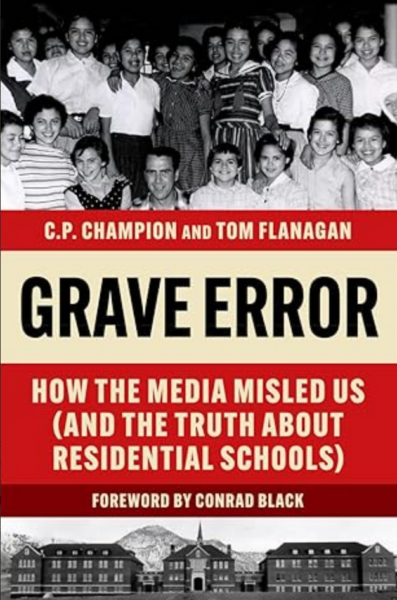In the National Post, Father Raymond J. de Souza notes the almost un-noticed third anniversary of the dramatic announcement and ensuing moral panic over claims that hundreds of unmarked graves had been discovered at the site of a former Residential School in Kamloops, BC:
This past week marked the third anniversary of the dramatic announcement that 215 “unmarked graves” had been discovered near a former residential school in Kamloops. It was a global news story which had a significant impact in Canada. It was also a great media malpractice.
Many things were reported then that were not only not true, but had not even been claimed to be true by anyone. Recall the monstrously misleading headlines about mass murder and mass graves? For example, from the Toronto Star on 28 May 2021: “The Remains of 215 Children Have Been Found”.
Not true. No one ever claimed that remains had been found. Many people assumed that the “unmarked graves” held children, but the ground-penetrating radar employed cannot reveal if a body is in the soil, let alone whether it is a child or adult.
Tales of mass murder and mass graves produced a massive moral panic. Marches were held, symbolic children’s shoes were assembled, churches were burned and vandalized, hundreds of millions were committed to investigating further mass graves, the prime minister ordered flags at every embassy abroad and federal building at home to be lowered for nearly six months, a new federal holiday was instituted, the Catholic Church issued (another) apology and Pope Francis came to visit.
How can it now be that the anniversary of something so globally momentous passed so quietly this week?
It’s because the great media malpractice has been answered by journalists, a broader category in the digital world, who provided the effective response. It’s an inspiring David and Goliath tale of how courageous, good journalism beat out conforming, bad journalism.
We can take some pride here at the National Post, for on the first anniversary we published the remarkable reporting of Terry Glavin, who demonstrated exactly how media malpractice had produced a moral panic.
But aside from that, the work was carried out by writers — academics, reporters, amateur researchers and dogged citizens — outside of the legacy media. The story unfolded in C2C Journal, Dorchester Review, True North, Western Standard, the Frontier Centre for Public Policy and Quillette.
Last December, a single volume collecting much of this work was published: Grave Error: How the media misled us (and the truth about residential schools), edited by Christian Champion, founder and publisher of the Dorchester Review, and the well known academic and political player, Tom Flanagan, professor emeritus at the University of Calgary.
Those outlets which had perpetrated the original malpractice took a pass. The legacy media ignored the book, and Canada’s major book retailers did not sell it.




